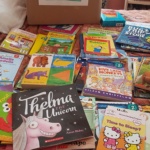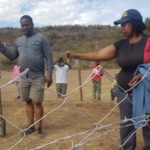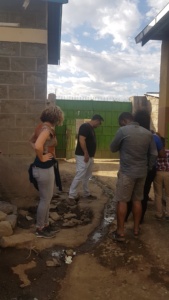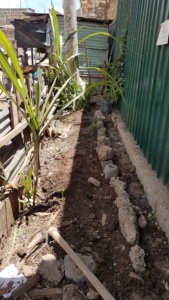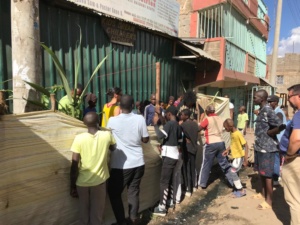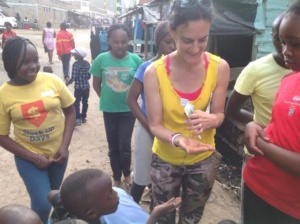We’ve (Paige, Mark and Julie) just returned from an amazing week in Kenya. The purpose of this visit was to reconnect with the children and the rest of our team at Kids’ Dream Orphanage in Nairobi. It was a fantastic week spent surrounded by many people I hold in very high regard because of the good they do for others and the Earth.
The team focuses on promoting the creation of regenerative economy though self-reliance and education. As much as possible, we try to get the kids involved in learning activities and interaction with inspirational role models. One of the highlights was a trip to Naivasha with all the children to see our friends James Kagwe and Elizabeth Wanjiru (Liz Shish) of Waste to Best Environmental. Liz and James are continuing to build upon the good work at their recycling center by adding new grey-water garden at an estate and a school garden project, as well as working in their community garden.
The school garden project is located at Naivasha Highway Primary and was a highlight for me because this project includes an after school permaculture club run by one of the teachers and Liz. It has been very popular with everyone involved and the latest news is that students are coming during their breaks to check on the garden! Project highlights include long, large double dug beds, a mandala garden and a garden watered by a greywater irrigation system. The double dug beds are prepared by digging deep trenches and filling them with compost and soil enriching material such as leaves, branches, manure, etc and then covered over again with the dug up soil. This helps keep moisture in the soil and provides nutrients to the plants. It is a very beneficial technique to combat drought. So far, the team has planted a wide assortment of herbs, vegetables, and fruit trees and despite the serious drought, the garden is thriving. Irrigation for one garden is provided through a greywater system tied into the handwashing station at the school. Overall, this is a great demonstration of drought tolerant planting strategies coupled with responsible resource management.
Our second stop was a greywater project in a nearby estate. The estate was due to be closed down due because there was a problem with poor drainage on the land causing unsanitary conditions. Liz and James designed and implemented a solution that directs this wastewater into a trench that feeds into a garden. At the moment, the food grown is fed to chickens until they add in plants (vetiver and moringa) that can filter the water before it heads to the vegetable garden.
The third stop was a visit to the community garden. The space is an amazing site with such a diversity of plants but also serves as a gathering place where women such as Rose lead projects like Jewelry Making. Rose’s goal is help to create an income for widows who have a difficult time finding employment.
Last but not least, we visited their recycling and food waste center, Waste to Best Environmental, to show the children how waste can become an asset. They also have animals – chickens and ducks (helping to turn the food waste into compost), sheep, a donkey (for hauling food scraps and recycling from local estates to their center) and puppies which of course was the favorite part of the day for the kids.
Before Mark, Julie and I headed home, we planned a short workshop at the orphanage, Gardening and Composting in Small Spaces. First we had to prepare the space so Jared, Gilbert and others set off to find material to use for mulching the top of the garden bed. They came back with corn husks. The team also came up with a new garden design which incorporated a new water rainwater harvest trench that will help capture the water into the garden instead of it rushing out into the street. This will help soak the space when rainwater is available but also can be used as a pathway instead of stepping on the soil. During the workshop we showed the neighbors examples of what they can grow in a small space and familiarized them with some local medicinal plants. We also taught them how to make compost with their food scraps and discussed alternative options for planting containers, such as recycled plastic water bottles. Finally, we demonstrated how to use the corn husks to mulch the garden beds after planting.
During this visit we were able to raise funds for ALL of the school fees for the YEAR! A great big THANK YOU to all of our donors! We brought donated books from Palatine, Illinois that were collected by the Marion Jordan Elementary School with the initiative being led by Daisy Troop #45304! The children absolutely loved the books and in fact, read every chance they got while we were there.
Our visit included starting an exciting chicken project at Kids’ Dream that will ensure that they have meat and eggs and also are able to raise chickens to sell.
Time flew by and we were sad to go. We are already looking forward to going back.
Until then, asante sana kwa kusoma!

